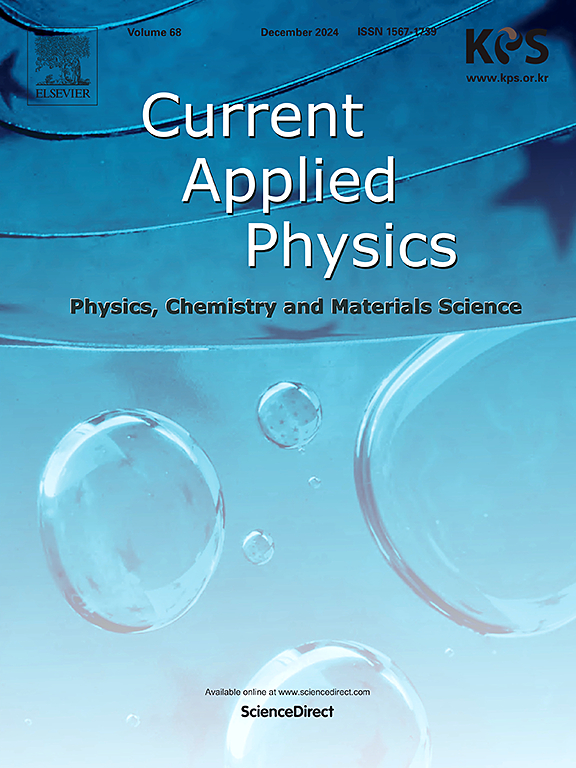Electron-beam-induced tunable reduction of graphene oxide on cellulose-based filter paper for flexible electromagnetic interference shielding
IF 3.1
4区 物理与天体物理
Q3 MATERIALS SCIENCE, MULTIDISCIPLINARY
引用次数: 0
Abstract
This study reports the electrochemical exfoliation synthesis of graphene oxide (GO) and the fabrication of free-standing GO films via vacuum filtration on cellulose filter paper (CFP). The films were subjected to electron beam irradiation at 10 keV for varying durations to achieve controlled reduction to reduced graphene oxide (rGO). Comprehensive characterization revealed significant changes in optical, thermal, chemical, morphological, mechanical, and dielectric properties, confirming successful reduction. The resulting rGO/CFP composite was used as electromagnetic interference (EMI) shielding in the 4–14 GHz range. Notably, the film was irradiated for 90 min, exhibiting a shielding effectiveness of 60.8 dB at 10 GHz with a thickness of 0.32 mm. This enhancement is attributed to improved conductivity, polarization relaxation, and dielectric losses caused by hopping carriers and lattice defects. E-beam irradiation presents a chemical-free, efficient method for producing flexible, high-performance rGO/CFP films for EMI shielding.

电子束诱导可调还原纤维素基滤纸上氧化石墨烯的柔性电磁干扰屏蔽
本研究报道了氧化石墨烯(GO)的电化学剥离合成以及在纤维素滤纸(CFP)上真空过滤制备独立的氧化石墨烯薄膜。将薄膜置于10 keV的不同持续时间的电子束照射下,以实现对还原氧化石墨烯(rGO)的控制还原。综合表征显示了光学、热、化学、形态、力学和介电性能的显著变化,证实了成功还原。所得到的rGO/CFP复合材料被用作4-14 GHz范围内的电磁干扰(EMI)屏蔽。值得注意的是,该薄膜辐照90分钟,在10 GHz下的屏蔽效能为60.8 dB,厚度为0.32 mm。这种增强归因于电导率、极化弛豫和由跳频载流子和晶格缺陷引起的介电损耗的改善。电子束辐照提供了一种无化学物质,高效的方法来生产柔性,高性能的rGO/CFP膜,用于EMI屏蔽。
本文章由计算机程序翻译,如有差异,请以英文原文为准。
求助全文
约1分钟内获得全文
求助全文
来源期刊

Current Applied Physics
物理-材料科学:综合
CiteScore
4.80
自引率
0.00%
发文量
213
审稿时长
33 days
期刊介绍:
Current Applied Physics (Curr. Appl. Phys.) is a monthly published international journal covering all the fields of applied science investigating the physics of the advanced materials for future applications.
Other areas covered: Experimental and theoretical aspects of advanced materials and devices dealing with synthesis or structural chemistry, physical and electronic properties, photonics, engineering applications, and uniquely pertinent measurement or analytical techniques.
Current Applied Physics, published since 2001, covers physics, chemistry and materials science, including bio-materials, with their engineering aspects. It is a truly interdisciplinary journal opening a forum for scientists of all related fields, a unique point of the journal discriminating it from other worldwide and/or Pacific Rim applied physics journals.
Regular research papers, letters and review articles with contents meeting the scope of the journal will be considered for publication after peer review.
The Journal is owned by the Korean Physical Society.
 求助内容:
求助内容: 应助结果提醒方式:
应助结果提醒方式:


